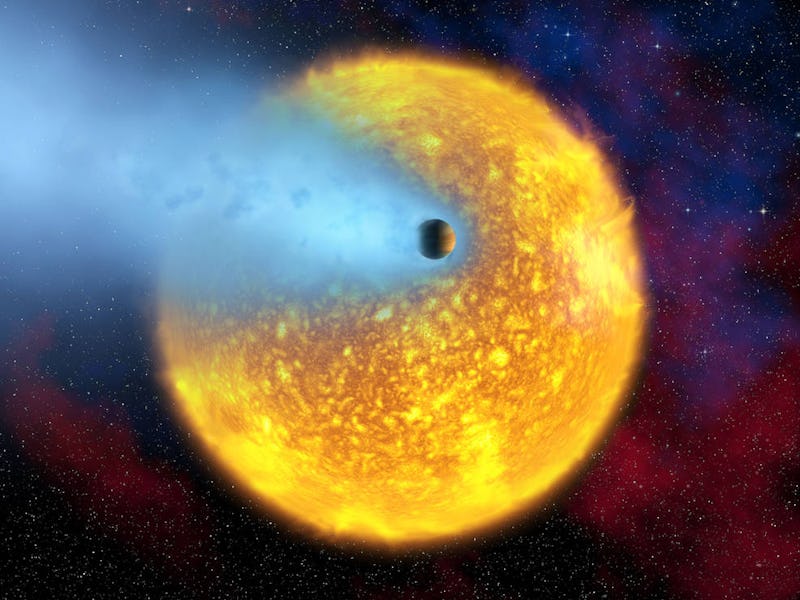To find out what an exoplanet is made of, look to its star
This could help scientists find habitable exoplanets.

A swirling disc of dust surrounds young stars. That dust turns into pebbles, pebbles turn into rocks, and rocks form planets like Earth.
The host star and its surrounding planets are bound together through more than just gravity — leftover material from the star's formation goes into molding its orbiting worlds.
A new study looks into the similarities in composition between a star and its rocky planets, finding a strong correlation between the elements that formed both objects and helping scientists in their search for habitable Earth-like rocky exoplanets.
The study was published Thursday in the journal Science.
WHAT'S NEW — The team of researchers behind the new study first selected 32 roughly Earth-size exoplanets to examine. They then narrowed it down to 22 exoplanets that they knew for sure to be rocky planets so that they could be somewhat confident of their composition.
Exoplanets and their orbiting stars share the same founding material.
It's hard to gather data on exoplanets — most of the time, when looking at distant exoplanets, scientists wait for the planet to transit in front of their stars from their observing view from a space-based or ground-based telescope.
To infer the potential composition, they look at the light from the star. This corresponds to the different elements that might make up the planet, and scientists can estimate the composition of the exoplanet.
Vardan Adibekyan, a researcher at the Institute of Astrophysics and Space Sciences in Portugal and lead author of the new study, says that he didn't exactly get what he was expecting from the research.
"We have been working on this for a long time, and we were hoping to confirm this correlation," Adibekyan tells Inverse. "We were expecting to see that they have the same composition, but what we found was a bit different from what we have been expecting."
The researchers found a correlation between the composition of a star and its planets, but it wasn't one-to-one. Instead, the planets tend to be more metallic than their stars.
For example, if the star consists of 30 percent iron, the planet might be 60 percent iron. The researchers aren't for sure yet why this is.
WHY IT MATTERS— A planet's habitability depends largely on the elements that make up the planet.
Carbon, hydrogen, oxygen, and nitrogen are considered vital elements for life on a planet. Scientists often look for these elements when they discover a new exoplanet to find out if it has potential for habitability.
Exoplanet Proxima b orbits a red dwarf star located only four light years away from Earth, and could potentially be habitable.
But figuring out the composition of a planet is much more complicated than identifying the elements of a star since planets are a lot dimmer than their host stars, and therefore harder to observe.
"With the relationship that we found between the composition of the planets and the stars," Adibekyan says. "By looking at the composition of the star, in a way, we can guess the composition of the planet."
WHAT'S NEXT — The researchers behind the recent study plan follow-up observations with a larger group of exoplanets.
With the European Space Agency's upcoming PLATO (Planetary Transits and Oscillations of stars) mission, which is set to launch in the year 2026, Adibekyan is hoping to add more planets to the study sample.
"This is not the final step," Adibekyan says. "But it's one step in being able to separate habitable from non-habitable planets."
Abstract: Stars and planets both form by accreting material from a surrounding disk. Because they grow from the same material, theory predicts that there should be a relationship between their compositions. In this study, we search for a compositional link between rocky exoplanets and their host stars. We estimate the iron-mass fraction of rocky exoplanets from their masses and radii and compare it with the compositions of their host stars, which we assume reflect the compositions of the protoplanetary disks. We find a correlation (but not a 1:1 relationship) between these two quantities, with a slope of >4, which we interpret as being attributable to planet formation processes. Super-Earths and super-Mercuries appear to be distinct populations with differing compositions, implying differences in their formation processes.
This article was originally published on